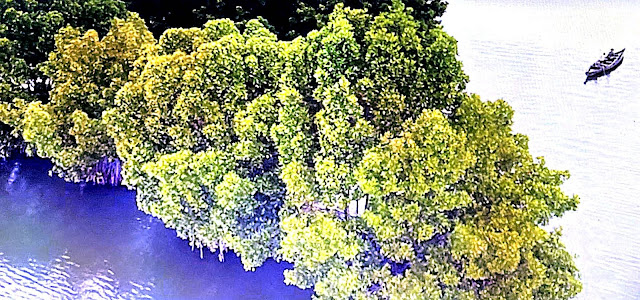Joy and Benefits of Cooking and Eating on Leaves.
Introduction:
I discussed the method of cooking on leaves in another article.
Hence, for details on cooking dessert on leaves, please read my article on hubpages. (https://hubpages.com/food/happiness-and-benefits-of-cooking-in-leaves-from-our-backyard-an-emotional-link).
In tropical and sub-tropical areas, they use banana leaves for cooking, wrapping, and food serving. In Tamil Nadu, for packing food, they use dried leaves. Banana leaves have natural antimicrobial properties that kill harmful bacteria. Banana leaves and palm leaves were the primary writing surfaces in South and Southeast Asia.
Banana belongs to the Monocotyledons class, the Zingiberales order, and the Musaceae family. The plant has a herbaceous growth habit with leaves overlapping basal sheaths.
Steamed rice wrapped in banana leaves enhances its aroma. It is delicious.
Banana leaves are large, flexible, and waterproof. They impart an aroma to food that is cooked in or served on them; steaming with banana leaves imparts a subtly sweet flavor and aroma to the dish.
Besides adding flavor, the leaves keep juices in and protect food from burning, much as oil does.
- There is a pleasure in eating a meal on a banana leaf.
- These large waxy leaves have been used throughout Kerala to serve food for thousands of years.
- Even today, serving food on banana leaves is custom for weddings, and we use only banana leaves for poojas (rituals).
Healthy
The banana leaf itself isn't edible. However, when you eat food from a clean banana leaf, some of its nutrients get infused into the food. These nutrients include phenols, flavonoids, and proanthocyanidins that exhibit natural antimicrobial and antioxidant properties.
Improves Taste
- The natural wax coating on banana leaves has a mild flavor.
- When hot food comes into contact with the phenols, it melts slightly to enrich the taste and flavor.
- Polyphenol oxidase, a waxy substance present on the surface of leaves, is a natural antioxidant.
- It melts when we serve hot food, which is good for our health in many ways.
Eco-friendly
Banana leaves are biodegradable. All the used banana leaves are collected and transformed into compost. That will turn into manure for further use, pollution-free.
Benefits and Uses:
- In Kerala's traditional sadya, we usually have at least ten side dishes. When we serve food on banana leaves, it is possible to serve all the dishes on banana leaves because of their large size.
- We cultivate bananas in almost all houses in Kerala. So, we are enjoying the abundant collection of leaves.
Banana leaves are waterproof, so it will help to keep your tablecloth neat always.
A shining look on banana leaves is due to the presence of wax on them. When we serve hot food, it melts and releases a pleasant aroma to the food.
- · Used for cooking in various cuisines for wrapping, steaming, and serving food.
- · No need for oil cooking.
- · Food cooked on banana leaves absorbs the polyphenols, protection against lifestyle- diseases.
- · In many Hindu ceremonies, they serve decorative and symbolic purposes (rituals).
- Like green tea, banana leaves also possess these anti-oxidant properties in them.
- Banana leaves are a great eco-friendly alternative to steel or plastic plates. They decompose rapidly and help reduce soil pollution. The decomposed banana leaves can be used as manure to grow more plants.
The water-resistant quality of banana leaves also prevents harmful chemical liquid fertilizers from sticking on their surface. Hence, it becomes less dangerous. Also, you can easily clean them before eating without any health risks.
We can clean the banana leaf using a wet cloth. For cleaning steel or plastic plates, we use soaps or detergents. But for banana leaves, no need to use a dishwasher. That makes us free of indirect intake of chemicals from soaps or detergents.
Cinnamon leaves (Vazhana ila in Malayalam):
The leaves of the cinnamon plant (bay leaf) give a delicious aroma to the dishes.
- It applies to food flavoring, essential oil applications, and traditional medicine.
- It contains tannins, flavones, flavonoids, alkaloids, eugenol, linalool, methyl chavicol, and anthocyanins.
Tender parts are velvet hairy.
Leaves measure 20 to 50 centimeters (7.9 to 19.7 in) by 12 to 21 centimeters (4.7 to 8.3 in), are alternately arranged, circular, or broadly ovate, and palmately 9-nerved (6-7).
The leaf stalk is attached to the lower surface of the leaf, not to the base.












Comments
Post a Comment